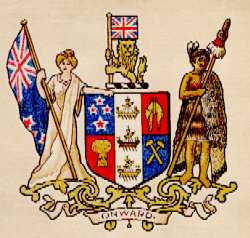|
NZ Artillery of World War 1
In 1914, one Brigade of Mounted Rifles, one Brigade of Infantry and one Brigade of Artillery left New Zealand to fight in the foreign war that was to be known in later years as World War One. They joined with the 1st Australian Division and headed under convoy for Egypt, arriving at Alexandria in December 1914 where they were joined by a brigade of Australian Infantry and known as the New Zealand and Australian Division. While there they repelled a Turkish attack on the Suez Canal. On 25 April 1915, the Australasians landed at Gallipoli but in December 1915, the Gallipoli Peninsula was abandoned and the survivors returned to Moascar on the Suez Canal. They were joined by so many reinforcements from New Zealand and Australia that in 1916 the New Zealand and Australia Division was reorganised and the New Zealand Division was formed. The 1st Artillery Brigade had been made up of the 1st, 3rd and 6th(How.) Batteries. The 2nd Artillery Brigade had been made up of the 2nd, 5th and 4th(How.) Batteries. The expansion in 1916 saw eight new 18-pr batteries formed and a reorganisation to:
The Brigade Ammunition Columns were absorbed into the Divisional Ammunition Column. In addition, one heavy and three medium (XNZ, YNZ, ZNZ) trench mortar batteries were formed.
This organisation endured for the remainder of the War. In 1919, men were progressively demobilised but there was still a requirement for a speedy return to activity should the need arise. The artillery and DAC were reduced to a 4-gun then a 2-gun basis, two 4-gun batteries being formed in each brigade. Medium and light mortar batteries were disbanded and the men absorbed back into artillery and infantry units. Divisional Artillery Headquarters, artillery brigades, batteries and the DAC were broken up on 18th March 1919. From a population of slightly over one million, New Zealand provided 110,000 troops and nurses; 15,000 were killed. Click on the units above for more information. Home - History - Songs & Poetry - Tales - Units |
